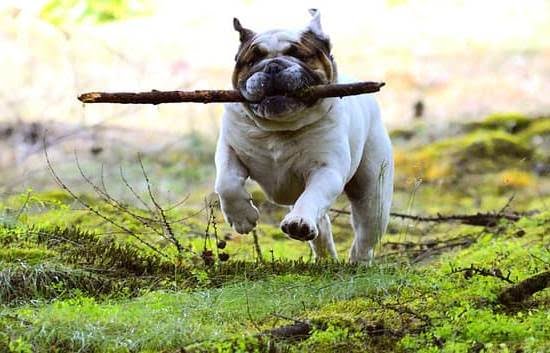Are you wondering how to train your dog to not chase bikes? It’s a common issue that many pet owners face, but with the right techniques and training, it is possible to teach your furry friend to resist the urge. In this article, we will explore the reasons behind why dogs chase bikes and provide a comprehensive guide on how to address this behavior through understanding, training, and positive reinforcement.
Many dog owners have experienced the frustration of their pets darting after passing bicycles. This behavior can be attributed to a variety of factors, such as natural predatory instincts, lack of obedience training, or simply curiosity. Understanding why dogs chase bikes is crucial in developing an effective training plan that will help curb this behavior.
In the following sections, we will delve into the dangers of bike chasing for both the dog and the cyclist, as well as basic obedience training techniques like ‘sit,’ ‘stay,’ and ‘come’ commands that form the foundation for addressing bike chasing. We’ll also discuss desensitization techniques to gradually expose your dog to bikes in a controlled environment and emphasize the importance of consistency in practice and positive reinforcement.
So if you’re ready to put an end to bike chasing behavior and ensure a safe and enjoyable outdoor experience for both you and your canine companion, read on for some valuable insights and tips.
The Dangers of Chasing Bikes for Both the Dog and the Cyclist
Dogs chasing bikes can pose a significant danger not just to the cyclist but also to the dog itself. When a dog is in pursuit of a moving object, it may become so fixated on the chase that it puts itself in harm’s way by running into traffic or obstacles. Additionally, if a cyclist feels threatened by a chasing dog, they may swerve and lose control of their bike, resulting in an accident for both parties.
Physical Dangers for the Dog
The physical dangers for the dog while chasing bikes are numerous. The high-speed nature of chasing after a bike can lead to injuries such as muscle strains, torn ligaments, or even broken bones. In some cases, dogs have been known to run into traffic or other hazards while pursuing cyclists, leading to potentially life-threatening accidents.
Legal Consequences for the Owner
In addition to physical harm, there are legal consequences that pet owners should be aware of. If a dog causes an accident or injury due to chasing after a bike, the owner could be held liable for any resulting damages. This could include medical expenses for the cyclist and potential legal fees if litigation is pursued.
It is important for both dog owners and cyclists to understand the risks involved with dogs chasing bikes and take proactive measures to prevent such incidents from occurring. By doing so, both dogs and cyclists can coexist safely in shared outdoor spaces.
Basic Obedience Training
Teaching the Sit Command
Start by holding a treat close to your dog’s nose and then slowly move your hand up, causing the dog’s head to follow the treat and causing their butt to lower. Once they’re in sitting position, say “sit,” give them the treat, and share praise. Repeat this process multiple times throughout the day.
Training the Stay Command
After teaching your dog to sit on command, gradually increase the duration of time you ask them to stay in that position before giving them a treat or praise. Start with just a few seconds and then work your way up to several minutes.
Mastering the Come Command
Teaching your dog to come when called can be beneficial when trying to minimize chasing behavior. Start indoors with minimal distractions and call your dog’s name followed by “come.” When they do, reward them with a treat and verbal praise. Gradually increase the distance between you and your dog as well as the level of distractions when practicing this command.
By mastering these basic obedience commands, you’ll be better equipped to train your dog not to chase after bikes effectively. Consistent practice in different environments will also help reinforce these commands in real-life situations where bike-chasing behavior may arise.
Introduction to Desensitization Techniques
Dogs are natural hunters and chasers, and the sight of a fast-moving object such as a bike can trigger their prey drive. This behavior is instinctual, and some breeds may be more prone to this behavior than others. In addition to their natural instincts, dogs may also chase bikes out of frustration, boredom, or lack of physical and mental stimulation.
The Dangers of Chasing Bikes for Both the Dog and the Cyclist
Chasing after bikes not only poses a risk to the safety of cyclists but also endangers the dog. There have been numerous cases of dogs getting injured or causing accidents as a result of chasing bikes. It is crucial for dog owners to address this behavior to prevent any potential harm to both their pets and others.
Basic Obedience Training: Sit, Stay, and Come Commands
Before introducing desensitization techniques, it is important to establish a strong foundation in basic obedience training. Commands such as “sit,” “stay,” and “come” are essential for controlling your dog’s behavior around bikes. These commands will provide you with a means of directing your dog’s attention away from the bike and towards you when needed. Consistent practice and reinforcement of these commands are crucial in helping your dog learn self-control and focus during bike encounters.
| Aspect | Information |
|---|---|
| Key Behavior | Dogs chase bikes due to their natural instincts as hunters and lack of stimulation. |
| Risks | Chasing bikes poses danger to both the dog (injury) and cyclists (accidents). |
| Obedience Training | Basic commands like sit, stay, come provide control over your dog’s behavior around bikes. |
Practice Makes Perfect
Training a dog to not chase bikes requires a consistent and repetitive approach. Dogs need regular, consistent training to help them understand what is acceptable behavior and what is not. Here are some tips on how to effectively train your dog to not chase bikes:
- Run through obedience commands regularly: Incorporate the “sit,” “stay,” and “come” commands into your daily routine with your dog. Regular practice of these basic obedience commands will help reinforce good behavior and control over your dog, which can be crucial when encountering a bike while on a walk.
- Gradually expose your dog to bikes: Once your dog has mastered the basic obedience commands, start introducing them to bikes in a controlled environment. This could be in a quiet parking lot or an empty street where you can safely simulate encounters with bikes. Remember to keep your dog on a leash during this exposure process.
- Consistent training sessions: Set aside regular training sessions specifically dedicated to addressing the issue of chasing bikes. Consistency in training will help reinforce the behavior you want from your dog, and over time, they will learn that chasing bikes is not acceptable.
By consistently practicing obedience commands, gradually exposing your dog to bikes, and maintaining regular training sessions focused on addressing the issue of chasing bikes, you can effectively train your dog to exhibit better behavior while out on walks. Remember that patience and consistency are key when working with any behavioral issues in dogs.
Using Positive Reinforcement
One of the most effective ways to train a dog to not chase bikes is through positive reinforcement. This method involves rewarding your dog for exhibiting good behavior, such as ignoring passing bikes or responding to commands. Positive reinforcement can be in the form of treats, verbal praise, or toys, and it helps to reinforce the desired behavior in your dog.
When using positive reinforcement to train your dog, it is important to be consistent and timely with the rewards. For example, when you see a bike approaching and your dog remains calm and focused on you instead of chasing after it, immediately give them a treat or verbal praise. This way, they will begin to associate not chasing bikes with receiving something positive.
It’s also important to keep training sessions short and enjoyable for your dog. Try to incorporate positive reinforcement into everyday activities such as walks or playtime. This will help your dog understand that good behavior leads to rewards in various situations.
| Positive Reinforcement Method | Effectiveness |
|---|---|
| Treats | Highly effective in motivating dogs |
| Verbal Praise | Affirms good behavior and strengthens bond with owner |
| Toys | Can be used as a reward for certain behaviors |
Troubleshooting
Having a dog that continues to chase bikes can be frustrating, but it’s important to address this behavior in a positive and proactive manner. Here are some troubleshooting tips to help you manage your dog’s behavior:
- Assess the situation: Take note of when and where your dog tends to chase bikes. Is it during walks, in certain areas, or when specific triggers are present? Understanding the context can help you develop a targeted training approach.
- Increase distance: If your dog is still struggling to resist the urge to chase bikes, consider increasing the distance between your dog and passing cyclists. This will allow you to work on obedience commands and desensitization techniques in a more controlled environment.
- Seek professional help: If despite your best efforts, your dog continues to chase bikes aggressively or impulsively, it may be time to seek professional help from a certified dog trainer or behaviorist. They can provide personalized guidance and solutions based on your dog’s specific needs.
Remember that addressing problematic behaviors takes time and patience. Consistency is key, so continue practicing obedience commands, desensitization exercises, and positive reinforcement techniques. With dedication and effort, you can help your dog overcome their instinct to chase bikes and enjoy a safe and harmonious relationship with cyclists and other dogs.
The Importance of Exercise and Mental Stimulation for Your Dog’s Overall Behavior and Well-Being
In conclusion, training your dog to not chase bikes is essential for their safety and the safety of cyclists. Through understanding the behavior of why dogs chase bikes, recognizing the dangers involved, and implementing basic obedience training such as Sit, Stay, and Come commands, you can start to address this issue. Additionally, introducing desensitization techniques in a controlled environment and consistently practicing positive reinforcement will help your dog understand the appropriate behavior around bikes.
It is important to remember that training your dog takes time and patience. Consistency in your approach, along with plenty of repetition, will be key in successfully teaching your dog not to chase bikes. Using positive reinforcement, such as treats or praise, is also crucial in encouraging good behavior.
Furthermore, it’s important to note that exercise and mental stimulation play a significant role in your dog’s overall behavior and well-being. A well-exercised and mentally stimulated dog is less likely to engage in unwanted behaviors out of boredom or lack of stimulation.
So, in addition to bike-chasing specific training, ensure that your dog gets enough physical activity and mental enrichment through walks, playtime, and interactive toys. By addressing these needs alongside specific bike-chasing training, you can help ensure a happy and well-behaved furry companion.
Frequently Asked Questions
Why Is My Dog Chasing Bikes?
If your dog is chasing bikes, it could be due to a number of reasons. It may be a form of predatory behavior, excitement, or simply their natural instinct to chase moving objects. Some dogs also do it out of fear or anxiety. Understanding the motivation behind their behavior is the first step in addressing and correcting this issue.
How Do I Stop My Dog From Attacking My Bike?
To stop your dog from attacking your bike, it’s important to work on training and desensitization. Start by teaching them basic obedience commands and focusing on impulse control.
Gradually introduce the sight and sound of bikes in a controlled environment, rewarding them for calm behavior. Seek professional help if necessary, as aggressive behavior towards bikes can be dangerous for both your dog and others.
How Do I Stop My Dog Reacting to Bikes?
Reactivity to bikes can be managed through positive reinforcement training and counter-conditioning techniques. This involves gradually exposing your dog to bikes at a distance where they remain relaxed and then rewarding them for calm behavior.
Over time, you can work on decreasing the distance between your dog and the bikes while continuing to positively reinforce their non-reactive behavior. It’s important to be patient and consistent with this process in order to see improvements in their reaction to bikes.

Welcome to the blog! I am a professional dog trainer and have been working with dogs for many years. In this blog, I will be discussing various topics related to dog training, including tips, tricks, and advice. I hope you find this information helpful and informative. Thanks for reading!





